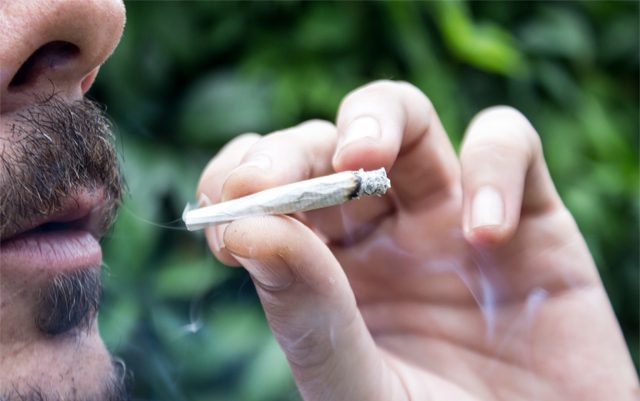A new study published earlier this month in the journal Clinical Microbiology and Infection came to the conclusion that raw or dried marijuana is harmful to smoke and that it should not be recommended to anyone for medical reasons.
“We cannot recommend inhaling it,” said George Thompson III, an associate professor of clinical medicine at the UC Davis who helped conduct the research. It seems the samples researchers looked at had a lot of mold and bacteria in them, something that can be especially harmful to patients who have compromised immune systems.
“Infection with the pathogens we found in medical marijuana could lead to serious illness and even death,” Joseph Tuscano, a professor of internal medicine at UC Davis, said in a statement. “Inhaling marijuana in any form provides a direct portal of entry deep into the lungs, where infection can easily take hold.”
But of course the controversy does not end there. We were fortunate to speak with Reggie Gaudino, Ph.D., the Vice President of Scientific Operations and Director of Intellectual Property for Steep Hill Labs, Inc. about the study, which Steep Hill provided samples for. While Steep Hill was involved in the study as far as providing samples goes, they were not privy to the conclusions arrived at and do not necessarily agree with the findings.
Because a patient that the study looked at had passed away and had been found to have had some of the same bacteria and fungi in their system as was found in the cannabis samples, the conclusion was drawn that one might be leading to the other.
“Steep Hill had nothing to do with the conclusion regarding whether or not cannabis actually killed [the patient],” Reggie told The Marijuana Times. “What ended up happening was they had a number of patients that, I think they said in the story, five, right? All presented with a common rare fungal infection, one of whom died from it. And the one who died, the reason why it was special was because the disease typically has a longer onset and he got the infection and was dead within three months which is typically not how that works. But again, because he was immunocompromised, it probably contributed to that, right?”
When the question “what could be the possible route of entry had been?” is asked, Reggie says there are several ways, inhaled cannabis being just one.
While Reggie admits that there is evidence that cannabis contains “large amount of microbial colonies” that does not mean that the bacteria in the patients looked at by the study came from cannabis.
“There are two different things here,” Reggie continued. “There is the scientific study that shows that cannabis can in fact be the vehicle for delivery of pathogenic bacteria and fungus to an immunocompromised patient. The conclusion from the study was those who are immunocompromised should not use cannabis therapy that involves flower or inhalation at all – so a flower, vaping or smoking. However, cannabinoid therapy with extracts and edibles, those things that have been processed and then appropriately tested to make sure that those things are clean would be a better vehicle for cannabinoid therapy for patients. That’s the scope of the paper.
“Now, in an effort to maybe be a little sensationalist or possibly to push the focus away from possible hospital infection – because these bacteria and molds are typically found most of the time in immunocompromised patients being introduced by the hospital environment, because of bad air ducts or whatever, and so Listeria, Klebsiella, Pseudomonas, Aspergillus, those things are in an immunocompromised patient – if the hospital is not completely sanitary, then they can get those things there. To some degree, this may have been a way for them to say, ‘hey, this kid died, but it wasn’t because of the hospital environment. It was because of something else.’ And that’s why they said it was self-inflicted. That kind of how the science and the medicine combine but we are not one and the same. We didn’t get a cannabis sample from the kid’s death to say, ‘well, here. Cannabis killed him.’ We didn’t do that.”
So what conclusion did Steep Hill come to? “Cannabis can in fact be the vehicle for the delivery of harmful pathogenic bacteria to people because it does live there,” Reggie said. “Absolutely we agree 100% with that. Whether or not that particular patient died from cannabis as cannabis-induced infection, I had no way to comment on that from the science that we did.”
Obviously more research is needed in this area when it comes to cannabis, but if you’re looking for definitive proof that smoked cannabis is dangerous to your health, you won’t find it in this study.







“Infection with the pathogens we found in medical marijuana could lead to serious illness and even death” the operative word here is “could”. Just like might, should, can, and other conditionals that are abundant in slanted studies interpreted by people still influenced by “Reefer Madness”. With the number of people still using Cannabis by smoking there ‘should’ be some indications of harm by the numbers of people showing symptoms. The numbers are not there. The sky is not falling.
There is a definite possibility that poorly grown cannabis can be harmful to immunocompromised individuals. To ignore that is asking for trouble. Healthy individuals aren’t going to be in the same potential risk group.
However, this ignores the fact that pathogenic bacteria and fungi can leave behind endotoxins and Mycotoxins which can hurt EVERYONE. Live counts or CFU don’t tell you if something was left behind. These are simple Scientific facts. So, moving ahead with the right information so decisions to build to the correct standards to avoid this type of problem is the prudent thing to do. Claiming the problem isn’t real is short sighted and will end up benefitting the naysayers by providing the wrong kind of data to point to in their arguments.